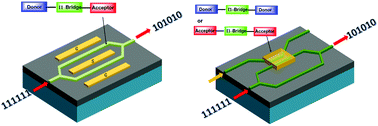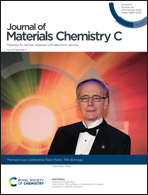High-performance organic second- and third-order nonlinear optical materials for ultrafast information processing†
Abstract
Organic nonlinear optical (NLO) materials are very important for high-speed information processing in addressing the challenges of reduced energy consumption and enhanced speed and bandwidth. In particular, organic second-order NLO materials are very promising for meeting the combined requirements of ultra-low energy and ultra-high bandwidth in electro-optic (EO) modulation, while organic third-order NLO materials have good potential for applications in ultra-speed all-optical signal processing (AOSP). This review highlights the recent significant progress made in organic second- and third-order NLO materials. For second-order NLO materials, the recent advances in the efficient and cost-effective synthesis of dipolar polyene chromophores and thin-film engineering for efficient electric field poling are summarized. The applications and prospects of these high-performance EO materials are also discussed. For third-order NLO materials, we discuss the molecular design strategies of cyanine dyes for AOSP applications, particularly focusing on anionic tricyanofuran (TCF)-based cyanines. We aim to provide a better understanding of the structure–property relationships for cyanine-based AOSP materials. Finally, a summary and outlook for advancing high-performance organic NLO materials are provided.

- This article is part of the themed collection: Celebrating Tobin Marks’ 75th Birthday


 Please wait while we load your content...
Please wait while we load your content...
